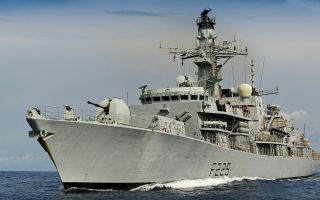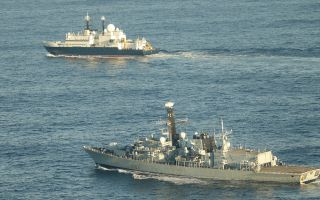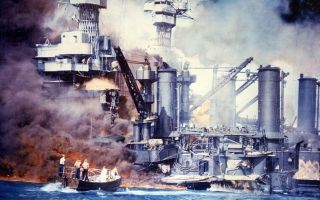RAF intercepts 50 Russian aircraft – about one every three days – on longest Nato policing deployment yet
British fighter pilots intercepted 50 Russian aircraft – about one every three days – during the RAF's longest Nato air policing deployment yet in Estonia.
The Typhoon pilots from RAF Lossiemouth have been protecting the skies over eastern Europe on Operation Azotize as part of Nato's Baltic Air Policing mission – the sharp end of defending the alliance's airspace.
On Wednesday, the RAF is handing over control of the mission in Estonia to the Spanish Air Force, bringing a busy deployment for the RAF personnel to an end.
- RAF Typhoons carry out simulated intercept of US B-52 bombers
- Threats in far north and Arctic may need greater military presence, MPs told
- P-8A Poseidon: What is the RAF's submarine hunter aircraft?
They have been providing Quick Reaction Alert capabilities on Russia's doorstep – from Amari Air Base in Estonia.
Officer Commanding 1 (Fighter) Squadron, Wing Commander John Cockroft told Forces News: "It's just a step up from business as usual, really, because it's the same thing we train for all the time.
"It's just we maybe get launched more frequently here because the aircraft that we are intercepting are predominantly from Russia and they're obviously not that far away, as opposed to in the UK, where we do intercept Russian aircraft, but not as frequently."
Around 200 personnel deployed to the country when the RAF took on the duties in March from the German Luftwaffe.
They have been monitoring the air traffic over the Gulf of Finland between St Petersburg and Kaliningrad – the Russian enclave to the south of the Baltic states.
Six jets from Lossiemouth have been primed and ready for when they are needed to intercept any aircraft deemed a threat.
During the deployment, the Typhoons intercepted 50 jets, half of them fighters, which works out at about one aircraft being intercepted every three days.
Over one 21-day period, the RAF said the Typhoons were scrambled six times, intercepting 21 Russian aircraft.
Pilot Wg Cdr Cockroft said: "To fly a Typhoon is an adrenaline rush. We're constantly on alert anyway. As soon as the buzzer goes off, the adrenaline obviously kicks in. But once you're in the aircraft and getting it going, then your training kicks in.
"It's something we practise all the time and it's something we need to be able to do at any time of the day or night, so you've got to be able to do it almost without thinking, but we have to be very methodical about what we do, hence the amount of training we actually do to make sure it's safe and professional at all times."
As well as the Baltic Air Policing, the RAF has also been developing its Agile Combat Employment concept.
It's a series of exercises – including Jousten Strike in Finland, which involved establishing forward refuelling and arming bases there and conducting bombing raids and simulated dogfights – allowing them to strike deeper into enemy territory with fewer assets.
This has been the RAF's longest deployment on Operation Azotize, the RAF's contribution to Baltic Air Policing, with the Spanish Air Force now taking on the duties in Estonia and continuing the protection of Nato's eastern flank.
Spanish Air Force Typhoon pilot Lieutenant Elena Gutierrez said: "It's what we train for every day so now that we are here to do the Baltic Air Policing mission it's a challenge for all of us and we're really excited.
"What I'm expecting is a lot of work, a lot of readiness status and to continue the good job that the British [Royal] Air Force has been doing the last four months."








